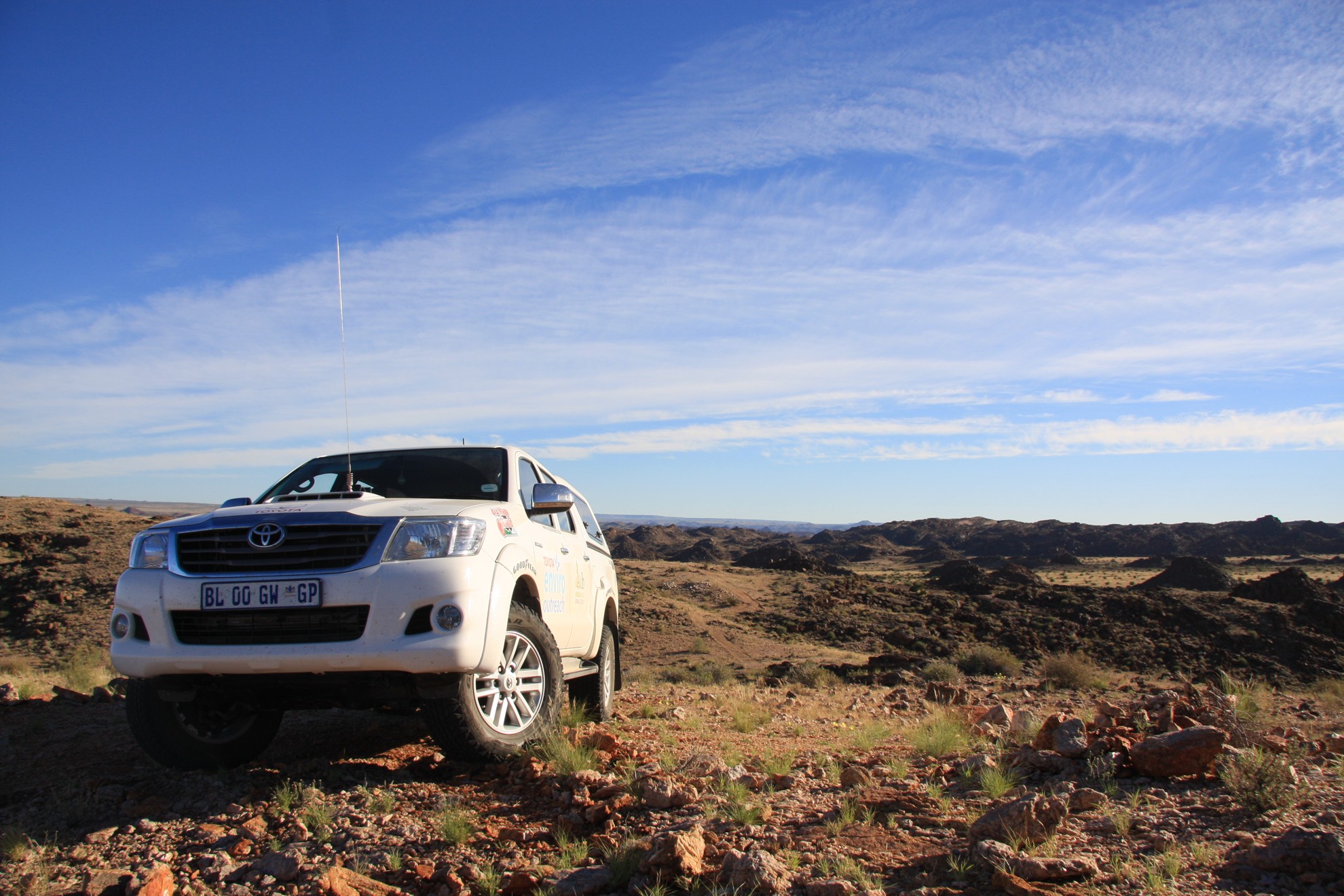Scientists and students from the University of Johannesburg, the South African National Biodiversity Institute, University of Pretoria and University of Cape Town spent a fortnight in April visiting several floristically interesting sites in the extremely arid Gariep and Upper Nama-Karoo regions of the Northern Cape.

Highlight of the 2013 Toyota Enviro Outreach, the fifth in the annual scientific study programme that seeks to safeguard South Africa’s natural wealth and reduce biodiversity loss, was the discovery of a rare species of plant last seen seven years ago.
Their common purpose was to document and DNA barcode the flora of the region and during their visit they collected more than 500 individual plants representing 400 species. They found a few plants they did not expect, like the new species of Trachyandra discovered in the Gamsberg Mountains near Aggenys and Eragrostis sarmentosa, collected at Raap en Skraap, which is the first distribution record for this species in the area.

When the tiny Trachyandra bulb was first discovered in 2006 there were no photographs taken or samples gathered to support the finding. Consequently it could not be recognised as a new species. The sample gathered during Toyota’s Enviro Outreach will now be used to confirm the authenticity of the new species and this will be added to the 100 or more new species found annually in South Africa.
“It will be exciting to follow the classification process and to know that Toyota Enviro Outreach played a significant role in this achievement,” said Prof Michelle van der Bank of the African Centre for DNA Barcoding (ACDB) in the Department of Botany and Biotechnology at the University of Johannesburg, who was the lead scientist on the project. The team of scientists will now spend the next few months sorting, identifying and DNA barcoding their plant collections.
The project forms part of the International Barcode of Life Project (iBOL). All the data generated will be uploaded on to the Barcode of Life Data Systems (BOLD), an online informatics platform, where it will become part of a growing reference library of DNA barcodes for South African plants and animals that will be freely available for use by the broader scientific and amateur naturalist communities.

“On behalf of the scientific team and our partners from the International Barcode of Life project I wish to express my deep gratitude to Toyota South Africa Motors for providing a fleet of vehicles and the unique opportunity through the Toyota Enviro Outreach to collect samples for DNA barcoding and to document the flora of the Northern Cape, where access is usually difficult if not impossible,” said Prof Van der Bank.


